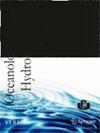A biomonitoring study of Diadema setosum: metal bioaccumulation and current status in Iskenderun Bay, eastern Mediterranean
IF 1
4区 环境科学与生态学
Q4 OCEANOGRAPHY
引用次数: 0
Abstract
Abstract Concentrations of aluminum, chromium, cobalt, nickel, cadmium, lead, manganese, iron and zinc were determined in sea urchin species, Diadema setosum from Iskenderun Bay in December 2022. The level of metals was determined by Inductively Coupled Plasma-Mass Spectrometer (ICP-MS). Concentrations of the heavy metals in the examined sea urchins ranged as follows: Al 0.07-7.17 μg g-1; Cr 0.07–0.8 μg g-1; Co 0.01–0.2 μg g-1; Ni 0.2–2.9 μg g-1; Cd 0.0–0.02 μg g-1; Pb 0.4-3.5 μg g-1; Mn 0.03–0.4 μg g-1; Fe 1.2-57.2 μg g-1; Zn 0.28–2.7 μg g-1, respectively. The highest accumulation of Fe and Pb metals was determined in the tissues of the sea urchin. The present study suggests that D. setosum could be a potential biological indicator of metal pollution in the Iskenderun Bay. Furthermore, soft tissues generally had lower levels overall. For this reason, the data show that D. setosum is a very good heavy metal collector and therefore may be used successfully to monitor heavy metal levels in Iskenderun Bay.Diadema setosum 的生物监测研究:地中海东部伊斯肯德伦湾的金属生物累积和现状
摘要 2022 年 12 月,测定了伊斯肯德伦湾海胆物种 Diadema setosum 中铝、铬、钴、镍、镉、铅、锰、铁和锌的浓度。金属含量是通过电感耦合等离子体质谱仪(ICP-MS)测定的。受检海胆中的重金属浓度范围如下:Al 0.07-7.17 μg g-1;Cr 0.07-0.8 μg g-1;Co 0.01-0.2 μg g-1;Ni 0.2-2.9 μg g-1;Cd 0.0-0.02 μg g-1;Pb 0.4-3.5 μg g-1;Mn 0.03-0.4 μg g-1;Fe 1.2-57.2 μg g-1;Zn 0.28-2.7 μg g-1。海胆组织中铁和铅的累积量最高。本研究表明,D. setosum 可能是伊斯肯德伦湾金属污染的潜在生物指标。此外,软组织中的总体含量普遍较低。因此,数据表明 D. setosum 是一种非常好的重金属收集器,因此可成功用于监测伊斯肯德伦湾的重金属水平。
本文章由计算机程序翻译,如有差异,请以英文原文为准。
求助全文
约1分钟内获得全文
求助全文
来源期刊
CiteScore
1.70
自引率
11.10%
发文量
8
审稿时长
>12 weeks
期刊介绍:
Oceanological and Hydrobiological Studies is an international journal published by the Institute of Oceanography, University of Gdańsk in Poland. The journal has 4 issues per year and contains papers on all aspects of the marine environment and hydrobiology. All manuscripts are reviewed by editors and independent experts. Based on the referees'' recommendations, the Editor will make a decision on whether to accept a contribution. All articles are published in English. The journal is open to all matters concerning the water environment, thus providing the readers with a wide spectrum of topics in every issue.

 求助内容:
求助内容: 应助结果提醒方式:
应助结果提醒方式:


